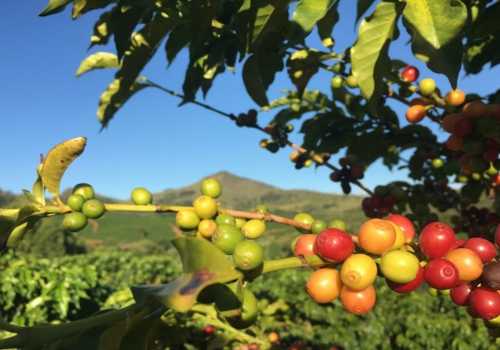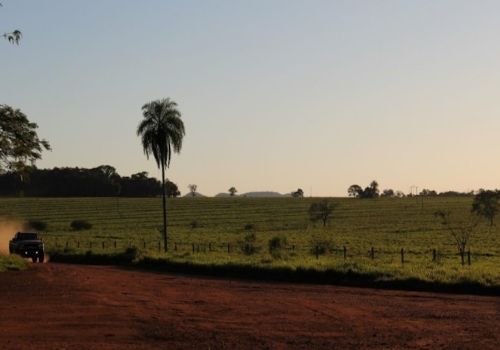By Jamie Males
As global food demand grows and environmental pressures on agriculture intensify, there is an increasingly urgent need for food systems that are sustainable and resilient. PLOS ONE publishes a range of scientific research touching on all aspects of food systems, from analyses of agronomic efficiency to participatory policy development. Following on from our recent blog on tropical agriculture, here we focus on the integration of agricultural crops in social and economic systems. We highlight a range of recent articles that provide important insights into the structure and function of current cropping systems, and the elaboration and deployment of improved alternatives.
Food system classification and food security metrics
Food systems around the world vary widely in terms of configuration and resilience, and Baer-Nawrocka and Sadowski produced a typology to classify prevalent food systems and levels of food security in individual countries [1]. Their results pinpoint areas of Sub-Saharan Africa and Central Asia where systemic food insecurity is most critical. Whilst the public discourse surrounding food systems often focuses on the quantity of food produced, understanding imbalances in nutritional quality is also of vital importance. In their PLOS ONE article, KC and colleagues compared recommended dietary composition with actual agricultural production [2]. At a global scale, they found evidence for overproduction of grains, fats and sugars, and underproduction of fruits, vegetables and proteins. This led the authors to propose ways of redressing this overall nutritional imbalance without compromising on land use and greenhouse gas emissions. Meanwhile, Grovermann and colleagues assessed eco-efficiency in the food systems of 79 developing countries [3]. They also identified factors that promoted agricultural innovation, finding that the most effective interventions were context-specific. But what factors drive the sustainability of any given food system? This question was addressed by Béné and colleagues, who identified twelve key drivers in a representative set of low-, middle- and high-income countries [4]. They found that most drivers had a negative effect on sustainability and could be associated with the global demographic transition, highlighting the even greater challenges that lie ahead.
Reproducible measures for food (in)security are fundamental to efforts to build a strong evidence base for effective interventions. A key finding of Misselhorn and Hendriks’s systematic review of food insecurity research in South Africa was that there was a widespread lack of consistency in the indicators used to measure food insecurity [5]. They see this as a major limitation for monitoring activities and for developing policies to improve local and regional situations. Meanwhile, working in Brazil and Colombia, Córdoba and colleagues proposed a conceptual and methodological framework for evaluation of resilience in agroecosystems [6]. They used a participatory approach to assess stakeholder agency, which is ranked as an important determinant of overall resilience in their evaluation framework. The need for meaningful measurement of climate resilience spurred Parker and colleagues to develop a climate risk vulnerability assessment for the tropics [7]. They applied their methods in Vietnam, Uganda and Nicaragua, identifying sub-national regions of contrasting vulnerability.

Crop diversification
The diversification of agricultural crops is often discussed as a potential route to more resilient food systems, at local, regional and global scales. Research by Smith and colleagues found that six decades of agricultural intensification in India had been associated with increased crop diversity at a national level, although this effect did not occur at a local scale [8]. Looking across a similar time interval, Martin and colleagues compared trends in crop diversity in 22 regions around the world [9]. They found broadly consistent patterns across these regions, including a marked increase in crop diversity in the 1970s-80s but an overall homogenisation of global crop species pools. At the level of the individual farm, the benefits of crop diversification must be weighed against the costs associated with a varied set of management requirements. To explore the potential consequences of labour market shocks on diversified farms, Beal Cohen and colleagues developed a model based on the example of labour-intensive fruit production in Florida [10]. Their results demonstrate that the effects of diversification on farm resilience are highly contingent on wider economic factors, which must be taken into account in agricultural policy development. Other PLOS ONE authors have investigated the potential of specific groups of crops for diversified agriculture. Toensmeier and colleagues focused on perennial vegetables, analysing the existing scientific literature to identify a number of key nutritional and environmental benefits of increased representation of these crops in food systems [11]. There are, however, major structural barriers to crop diversification. To understand these better, Morel and colleagues examined 25 European case-studies, performing a systematic characterisation of the contextual factors influencing the accessibility of crop diversification support schemes [12].
Land use
The land use requirements of agriculture are enormous, and it is crucial for researchers and policymakers to understand how they are affected by external factors and interact with other land uses. Mora and colleagues generated a set of scenarios of how future agricultural land use may be impacted by climate change and a range of socioeconomic factors [13]. These hypothetical scenarios can be used as tools in planning how best to adapt agriculture and food systems to future realities. Meanwhile, Hannah and colleagues examined how climate change may drive a poleward shift in crop cultivation, with extensive ramifications for global ecology and conservation [14]. They found that the expansion of cultivation across these climate-driven agricultural ‘frontiers’ could lead to particularly severe impacts on biodiversity, soil carbon storage and water resources. Debate also continues around perceived potential conflict between land use for edible crops and for bioenergy crops. In their analysis, Henry and colleagues found that, on current trajectories, food and bioenergy production could not be reconciled within a proposed planetary boundary of using 15% of the Earth’s ice-free land surface for crops [15]. Instead, they suggest that significant changes in the demand-side of the food system or revolutionary biotechnologies will be required to achieve such a target.
